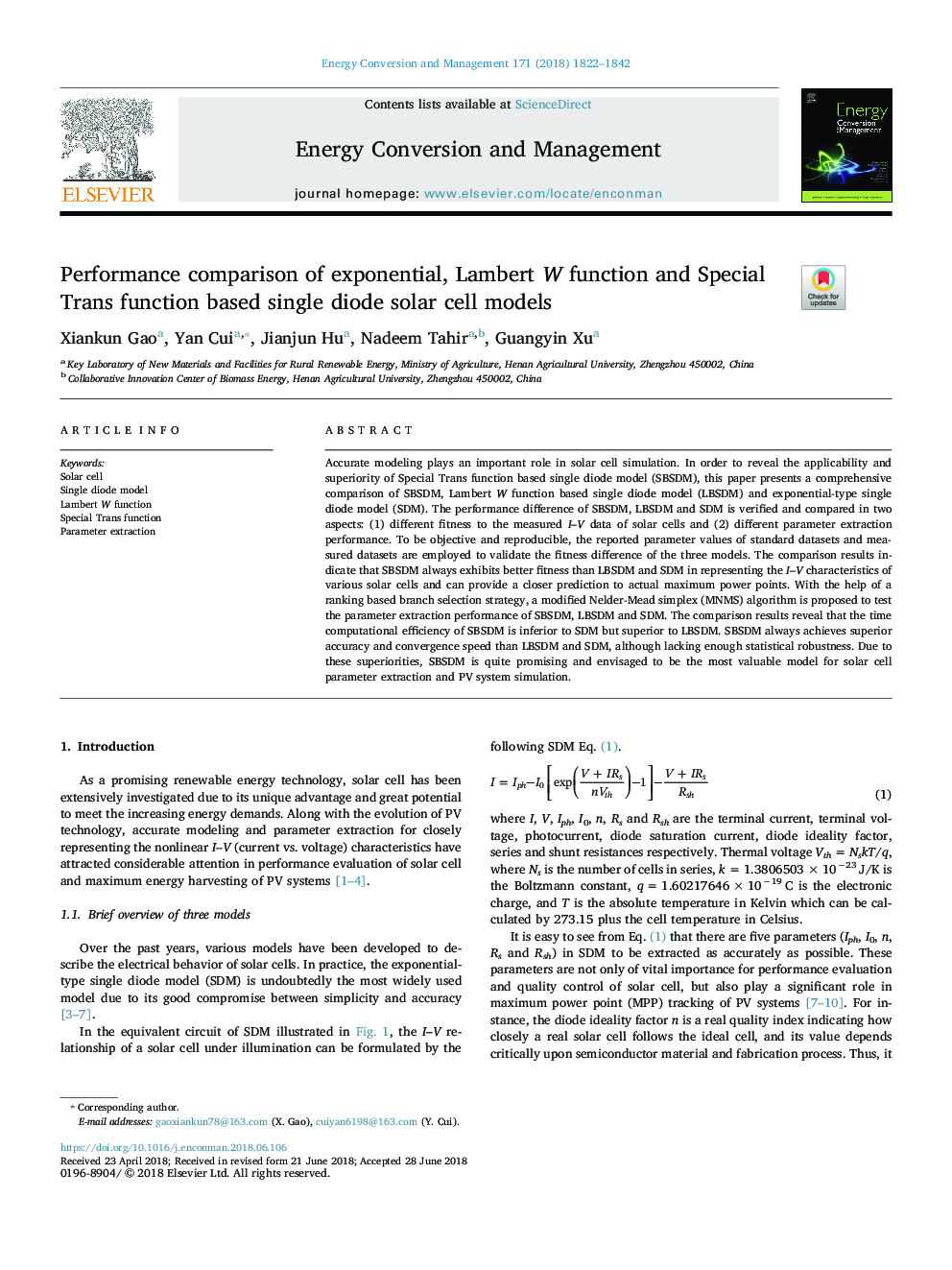| Article ID | Journal | Published Year | Pages | File Type |
|---|---|---|---|---|
| 7158213 | Energy Conversion and Management | 2018 | 21 Pages |
Abstract
Accurate modeling plays an important role in solar cell simulation. In order to reveal the applicability and superiority of Special Trans function based single diode model (SBSDM), this paper presents a comprehensive comparison of SBSDM, Lambert W function based single diode model (LBSDM) and exponential-type single diode model (SDM). The performance difference of SBSDM, LBSDM and SDM is verified and compared in two aspects: (1) different fitness to the measured I-V data of solar cells and (2) different parameter extraction performance. To be objective and reproducible, the reported parameter values of standard datasets and measured datasets are employed to validate the fitness difference of the three models. The comparison results indicate that SBSDM always exhibits better fitness than LBSDM and SDM in representing the I-V characteristics of various solar cells and can provide a closer prediction to actual maximum power points. With the help of a ranking based branch selection strategy, a modified Nelder-Mead simplex (MNMS) algorithm is proposed to test the parameter extraction performance of SBSDM, LBSDM and SDM. The comparison results reveal that the time computational efficiency of SBSDM is inferior to SDM but superior to LBSDM. SBSDM always achieves superior accuracy and convergence speed than LBSDM and SDM, although lacking enough statistical robustness. Due to these superiorities, SBSDM is quite promising and envisaged to be the most valuable model for solar cell parameter extraction and PV system simulation.
Related Topics
Physical Sciences and Engineering
Energy
Energy (General)
Authors
Xiankun Gao, Yan Cui, Jianjun Hu, Nadeem Tahir, Guangyin Xu,
